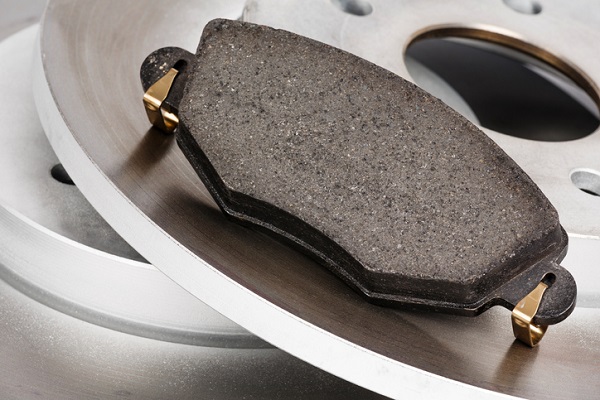Hit The Brakes! An Overview of Brake Pad Materials for Students in Mechanic Training

The science behind stopping a car revolves around friction. Many substances are effective in slowing down a vehicle when they are put into contact with the brake rotor, but there are many other characteristics which must be considered. Does the substance wear quickly? Is it well suited to performance or heavy load vehicles? Is it loud? How much debris does it leave behind? These are all questions answered before an auto mechanic chooses the correct brake pad for each vehicle during repairs.
Asbestos had been a popular material used during brake pad production in the mid to late 20th century. Such popularity rapidly declined after its health risks were discovered, and there are now three brake pad types which dominate the auto industry. Here’s a useful guide to help you judge the pros and cons of each.
Organic Pads: A Good Option for Everyday Driving
This type of brake pad has been around since the demise of the asbestos pad, and it’s a terrific option for normal driving in a small car. Organic pads are a resin-based mixture of materials including glass, fibre, and rubber. The low price tag means that they are a popular choice for car manufacturers and graduates of auto mechanic schools.
It’s a relatively soft mixture which brings advantages and disadvantages. These pads are very quiet when brakes are applied, but they do tend to wear more quickly than the alternatives. This also leads to the generation of dirty dust, which sticks to the wheels. Concerns are also regularly raised about the tendency of organic pads to become overheated when put under strain. This can be rectified by fitting ‘Low-Metallic’ organic pads, which have 10-30 per cent metal content and increased heat transfer capabilities.

Semi-Metallic Pads: The Better Braking Alternative After Mechanic Training
Semi-metallic brake pads are another popular option in the auto industry, and usually contain 30-65 per cent metal content (steel, copper, iron, etc). These pads offer better performance at a wider range of temperatures than organic pads, and are particularly good at dealing with high temperatures.
However, they are a firmer option and create a bit more noise than organic pads as a result. It’s also quite an abrasive mixture, which causes additional wear to the brake rotor. High amounts of brake dust are also produced which could mean more regular trips to the carwash for your client. Nevertheless, this could be seen as the ‘Jack of All Trades’, because it’s such a popular brake pad option for a wide variety of vehicle types, including trucks and vans.
Ceramic Pads: The Clean but Expensive Modern Technology
Ceramic pads are a relatively new step in auto engineering, and they will probably be the most expensive option when you become a mechanic. Made with ceramic fibres, copper fibres, and bonding agents, these pads are robust and long lasting. Despite their toughness, they are actually quieter than semi-metallic pads and produce a light brake dust that doesn’t stick to wheels.
Despite these advantages, ceramic pads don’t excel at heat absorption. Semi-metallic pads are therefore a better option for high performance/ racing cars. However, the ceramic properties make it a good performer in a wide range of temperatures, and they wear down relatively slowly, so keep these factors in mind the next time you encounter a client with brake pad trouble.
Become a car expert during mechanic training.
Develop the necessary skills and expertise at CATI.
